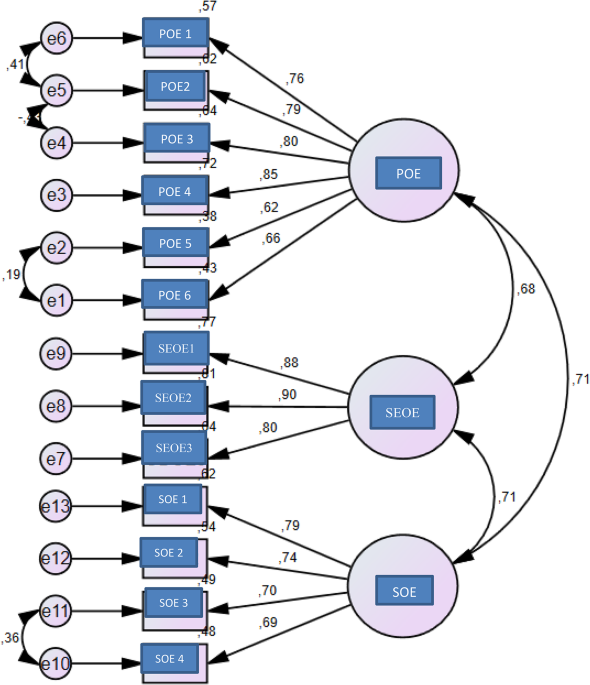Depression predicts future physical activity levels, but not vice versa, study finds

A recent study published in Mental Health and Physical Activity provides new insights into how depression and physical activity influence each other throughout adulthood. The study found that people who feel more depressed are less likely to be physically active, and being physically active is linked to feeling better mentally. Additionally, the findings indicate that depression symptoms can negatively impact future physical activity levels.
Depression and lack of physical activity are major public health concerns, contributing to illness and reduced quality of life globally. Previous research has suggested a connection between the two, but many studies have not been able to clarify whether depression leads to decreased physical activity or if physical inactivity exacerbates depression symptoms. The study aimed to fill this gap by using advanced statistical methods to better understand how these factors influence each other over time.
“Depression symptoms and physical inactivity are quite common and powerfully shape how people view themselves and interact with the world. I was drawn to this topic once I learned that physical activity has a similar effect on depression as many antidepressant medications but without the side effects,” said study author Soli Dubash, a doctoral candidate in the University of Toronto’s Department of Sociology.
The study utilized data from the Americans’ Changing Lives (ACL) survey, a long-term panel study that followed 3,499 U.S. adults over 25 years, from 1986 to 2011. Participants were surveyed five times during this period. The sample was diverse, including individuals from various racial backgrounds and both genders, ensuring the findings were representative of the general U.S. population.
Depression symptoms were measured using an 11-item scale from the Center for Epidemiological Studies-Depression scale. Participants rated how often they experienced symptoms like feeling depressed, restless sleep, and lack of energy in the past week. Physical activity was assessed through questions about how often participants engaged in activities such as walking, gardening, and playing sports.
The study employed a statistical method known as structural equation modeling with maximum likelihood estimation. This approach allowed Dubash to control for various confounding factors that could influence both depression and physical activity, such as individual biology, life history, and social context.
Dubash found an inverse relationship between depression symptoms and physical activity at each point of measurement. This means that individuals who reported higher levels of depression were less likely to engage in physical activity during the same period, and those who were more physically active tended to report fewer depression symptoms.
Importantly, the researcher also found that higher levels of depression symptoms predicted lower levels of physical activity in subsequent survey waves. This prospective relationship indicates that individuals experiencing more severe depression symptoms tend to become less active as time progresses.
Interestingly, the reverse was not observed: physical activity levels did not significantly predict future changes in depression symptoms. This suggests that while being active can help maintain mental health, it may not be sufficient to prevent the onset or worsening of depression over time without addressing the underlying mental health issues directly.
“It was surprising to find that present depression symptoms can negatively impact your physical activity levels two to five years later, while being inactive today is not related to your future depression symptoms,” Dubash said.
Earlier levels of both physical activity and depression symptoms significantly were found to predict future levels of the same. That is, if a person was physically active in earlier survey waves, they were more likely to remain active in future waves. Similarly, individuals who experienced higher levels of depression symptoms in earlier waves tended to continue experiencing high levels of these symptoms in subsequent waves.
This finding is important because it highlights the enduring nature of both physical activity levels and depression symptoms. It suggests that behaviors and mental health states established earlier in life can have long-lasting effects.
“There are two main findings that a normal person should take away from my study,” Dubash told PsyPost. “First, the benefits of moving more (or less) can be felt in the week to week. This means that feeling depressed isn’t a sign that something is wrong with you personally, but is likely to be a sign that you need to move more — whatever that looks like, be it walking, gardening, or exercising.”
“Second, there’s no wrong time to begin moving more. Thinking in the medium term, between two-to-five years, physical activity and depression can be persistent. So, building routines to go dog walking or to the gym with a friend, and then sticking with them can have lasting benefits both for your mental and physical health.”
But as with all research, the study includes some caveats. The measure of physical activity was based on self-reports, which can be subject to bias. Additionally, the study did not capture the intensity or total energy expenditure of physical activity, which could further clarify the relationship with depression symptoms.
“Research findings are not destiny,” Dubash noted. “The relationships in this study are not deterministic, so they do not mean that the effects of exercise on depression, or vice versa, will work out exactly as described for you personally.”
Future research could further examine the mechanisms underlying the relationship between depression and physical activity. “I would like to identify the contributions of social relationships to influence this relationship,” Dubash explained. “Could having friends that you walk with, go out dancing with, or to the gym with, influence this relationship in a significant way?”
The study, “The interplay of depression symptoms and physical activity: Bidirectional insights from 25-years of the Americans’ changing lives panel,” was published online on April 27, 2024.
link







